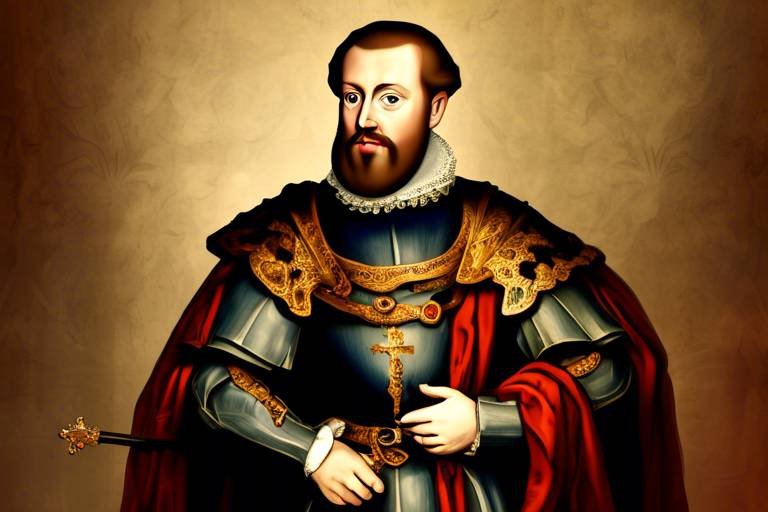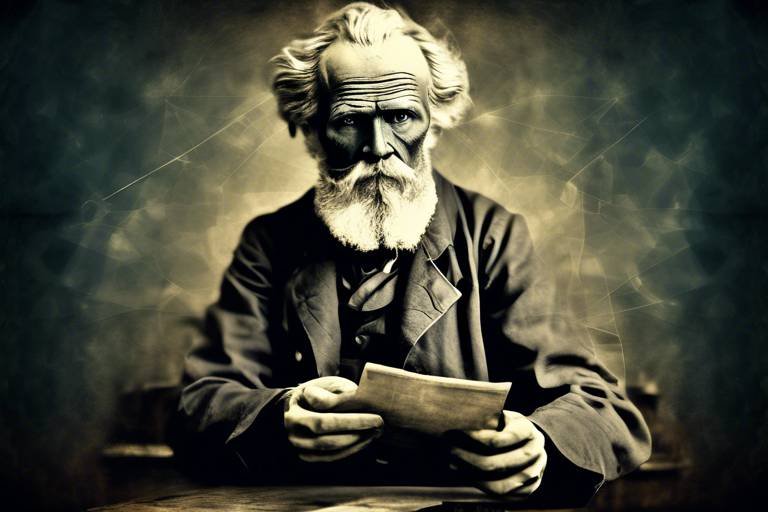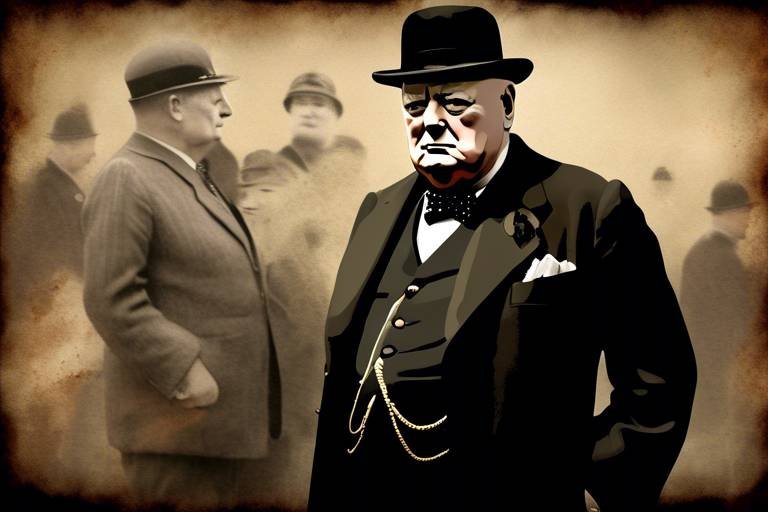Philip II of Spain: The Defender of Catholicism
Philip II of Spain, a towering figure in European history, was renowned for his unwavering commitment to defending Catholicism during a tumultuous era marked by religious conflicts and political upheavals. His reign as the King of Spain was characterized by a fervent dedication to upholding the Catholic faith as the cornerstone of his rule, shaping the course of his policies and actions throughout his life.
From his early years, Philip II exhibited a deep-rooted connection to his Catholic upbringing, instilled by his devout mother, Queen Isabella of Portugal. His education under the tutelage of prominent theologians and scholars further reinforced his religious convictions, laying the foundation for his future role as a stalwart defender of the Catholic Church.
Ascending to the Spanish throne in 1556, Philip II inherited a vast empire embroiled in religious discord, with Protestantism challenging the supremacy of Catholicism across Europe. Embracing his responsibilities as the ruler of a predominantly Catholic nation, he embarked on a mission to safeguard the faith against external threats and internal dissent, earning him the title of the Defender of Catholicism.
One of the most controversial aspects of Philip II's reign was his unwavering support for the Spanish Inquisition, a powerful institution tasked with rooting out heresy and enforcing religious orthodoxy. Under his patronage, the Inquisition wielded significant influence, striking fear into the hearts of those deemed as threats to the Catholic faith.
Philip II's military campaigns in defense of Catholic territories, including the ill-fated Spanish Armada's invasion of England in 1588, exemplified his commitment to preserving the integrity of Catholic domains against Protestant adversaries. Despite the defeat suffered in the naval conflict, his determination to protect Catholic interests remained undiminished.
Throughout his reign, Philip II maintained a close relationship with the papacy, seeking the support and blessing of the Catholic Church in Rome for his endeavors. His efforts to align his political ambitions with the interests of the Church underscored his belief in the inseparable bond between temporal power and spiritual authority.
The legacy of Philip II continues to resonate in the annals of history, leaving a complex and contested imprint on Catholicism, Spain, and European politics. His reign symbolizes an era of intense religious fervor and political intrigue, shaping the course of events that would define the future of the continent.
Under Philip II's patronage, art and culture flourished, with religious themes dominating artistic expression and cultural production. The artistic legacy of his reign reflects the profound influence of Catholicism on the creative endeavors of the period, showcasing the intertwining of faith and artistic expression.
Following his death in 1598, Philip II left behind a legacy of religious zeal and imperial ambition, challenging his successors to uphold his vision of a Catholic empire. The end of his reign marked a pivotal moment in Spanish history, signaling the conclusion of an era defined by the indomitable spirit of the Defender of Catholicism.

Early Life and Education
This article delves into the life and reign of Philip II of Spain, focusing on his role as a staunch defender of Catholicism during a period of religious turmoil and political challenges in Europe.
Philip II of Spain, born on May 21, 1527, in Valladolid, was the son of Holy Roman Emperor Charles V and Isabella of Portugal. His upbringing was deeply influenced by the strict Catholic values of his parents, instilling in him a fervent devotion to the Catholic faith from a young age. Philip received a comprehensive education, studying languages, history, and theology, which further reinforced his commitment to upholding Catholicism as a central pillar of his identity.
During his formative years, Philip II also developed a keen interest in politics and governance, observing the intricate dynamics of the Spanish court and the vast empire ruled by his father. This exposure to the complexities of statecraft and the responsibilities of leadership shaped his understanding of the importance of maintaining religious unity and stability within his realm.
As a young prince, Philip II was groomed for kingship, learning the art of diplomacy and strategy essential for navigating the turbulent waters of European politics. His early experiences in governance and administration prepared him for the challenges he would face upon ascending to the throne of Spain.
Philip's education was not limited to academic pursuits; he also honed his military skills, recognizing the need to protect Catholic territories from external threats and internal dissent. His formative years laid the foundation for his unwavering dedication to defending the Catholic faith and upholding the authority of the Church in the face of growing religious tensions and conflicts across Europe.

Ascension to the Throne
Upon the death of his father, Emperor Charles V, in 1556, Philip II ascended to the throne of Spain, inheriting a vast empire that spanned across Europe, the Americas, and Asia. At the young age of 29, Philip II took on the immense responsibilities of ruling over territories that were deeply entrenched in religious and political turmoil. His devout Catholic upbringing and education played a significant role in shaping his approach to governance and solidified his commitment to upholding Catholicism as the cornerstone of his reign.

The Spanish Inquisition
During Philip II's reign, the Spanish Inquisition played a significant role in maintaining religious orthodoxy and suppressing dissent within his kingdom and beyond. Established in 1478 by the Catholic Monarchs Ferdinand II of Aragon and Isabella I of Castile, the Spanish Inquisition was initially intended to ensure the purity of the Catholic faith in Spain.
Under Philip II's rule, the Spanish Inquisition gained more power and influence, becoming a feared institution known for its harsh methods of interrogation, torture, and punishment of heretics, conversos (Jewish converts to Christianity), and individuals suspected of practicing forbidden beliefs. The inquisitors operated with the authority to arrest, prosecute, and sentence individuals deemed as threats to the Catholic faith.
One of the most infamous aspects of the Spanish Inquisition was the use of autos-da-fé (acts of faith), public ceremonies where individuals found guilty of heresy were sentenced, often leading to severe punishments such as imprisonment, confiscation of property, or even execution by burning at the stake.
While the Spanish Inquisition was primarily focused on enforcing religious conformity and loyalty to the Catholic Church, it also served political purposes by eliminating potential dissent and consolidating Philip II's power. The threat of being targeted by the inquisition instilled fear among the population, leading many to self-censor their beliefs and actions to avoid suspicion.
Despite the controversial and brutal methods employed by the Spanish Inquisition, it was seen as a necessary tool by Philip II and other Catholic monarchs to maintain unity and stability in their kingdoms, especially during a time of religious upheaval and external threats to Catholicism.

Defending Catholic Territories
Philip II of Spain, known for his unwavering dedication to Catholicism, was a formidable defender of Catholic territories during a tumultuous period in European history. His commitment to upholding the Catholic faith extended beyond the borders of Spain, as he led military campaigns to protect and expand Catholic territories across Europe.
One of the most notable endeavors in Philip II's efforts to defend Catholic territories was his involvement in the Spanish Armada's ill-fated invasion of England. The defeat of the Armada in 1588 marked a significant setback for Philip II's ambitions to spread Catholicism and exert his influence in Protestant England.
Despite the failure of the Spanish Armada, Philip II remained steadfast in his mission to defend Catholic territories from the threats posed by Protestantism and other challenges to the Catholic Church. His military campaigns were not only driven by political ambitions but also by a deep-seated religious fervor that compelled him to protect the Catholic faith at all costs.
Philip II's defense of Catholic territories was not limited to military endeavors; he also utilized the Spanish Inquisition as a tool to maintain religious orthodoxy and suppress dissent within his kingdom. The ruthless methods employed by the Inquisition under Philip II's patronage were aimed at rooting out heresy and ensuring the purity of the Catholic faith in Spain and its territories.
Through his unwavering commitment to defending Catholic territories, Philip II left a lasting impact on the history of Catholicism in Europe. His legacy as a staunch defender of the faith continues to be remembered and studied, highlighting the complex interplay between religion, politics, and power during his reign.

Relationship with the Papacy
Philip II of Spain maintained a complex and significant relationship with the Papacy throughout his reign, seeking to align his political ambitions with the interests of the Catholic Church in Rome. His interactions with the papacy were characterized by a deep commitment to upholding Catholic orthodoxy and defending the faith against perceived threats, both internal and external. By forging close ties with the Pope and the Vatican, Philip II aimed to secure the spiritual and political legitimacy of his rule, presenting himself as a devout defender of Catholicism in the face of religious dissent and Protestant challenges.

Legacy of Philip II
Philip II of Spain left a profound legacy that continues to shape the course of Catholicism, Spain, and European history. His unwavering commitment to defending the Catholic faith earned him the title of "The Defender of Catholicism," a moniker that encapsulates his enduring impact on religious and political spheres.
One of the key aspects of Philip II's legacy is his role in solidifying Spain as a bastion of Catholicism during a tumultuous period marked by religious conflicts and power struggles. His staunch support for the Catholic Church and the Spanish Inquisition cemented his reputation as a ruler dedicated to upholding religious orthodoxy and suppressing dissent.
Furthermore, Philip II's military campaigns aimed at defending Catholic territories, such as the ill-fated Spanish Armada's invasion of England, underscore his determination to protect the interests of the Catholic Church and expand its influence across Europe.
Despite facing challenges and controversies during his reign, Philip II's unwavering commitment to Catholicism left a lasting imprint on the cultural and artistic landscape of Spain. The patronage of art and culture under his rule reflected the religious themes and influences that permeated society, shaping the artistic production of the era.
Philip II's legacy extends beyond his reign, influencing the trajectory of Spanish history and European geopolitics for years to come. His vision of a Catholic empire and his efforts to maintain close ties with the papacy set a precedent for future rulers and shaped the course of religious and political alliances in Europe.
In conclusion, the legacy of Philip II of Spain is a complex tapestry of religious fervor, political ambition, and cultural patronage that continues to captivate historians and scholars alike. His enduring impact on Catholicism, Spain, and European history serves as a testament to the power and influence of one of the most formidable rulers of his time.

Art and Culture Under Philip II
During the reign of Philip II of Spain, art and culture flourished under the strong influence of Catholicism. As a devout Catholic monarch, Philip II was a significant patron of the arts, commissioning numerous religious works that reflected the fervent piety of the period. Artists were often tasked with creating masterpieces that glorified the Catholic faith and celebrated the power and majesty of the Church.
One of the most notable artistic achievements of Philip II's reign was the construction of the El Escorial palace and monastery near Madrid. This grand complex served as a symbol of Philip II's commitment to Catholicism and his role as a defender of the faith. The architectural style of El Escorial reflected the blend of religious devotion and political power that characterized Philip II's rule.
Artists during this period were heavily influenced by the Counter-Reformation, a movement within the Catholic Church that sought to combat the spread of Protestantism through art and culture. Many artworks produced under Philip II's patronage aimed to inspire religious devotion and loyalty to the Catholic Church, using powerful imagery and symbolism to convey spiritual messages.
Philip II's court was a hub of artistic activity, attracting renowned painters, sculptors, and architects who contributed to the rich cultural tapestry of the Spanish Golden Age. Artists such as El Greco, Diego Velázquez, and Francisco Zurbarán created works that reflected the religious fervor and cultural richness of the era, leaving a lasting impact on the art world.
Furthermore, the literature of the period also reflected the prevailing religious themes and values of Catholicism. Writers and poets produced works that extolled the virtues of faith, loyalty, and devotion to God and king, aligning their creative output with the ideological framework promoted by Philip II's reign.
In conclusion, the art and culture under Philip II's rule were deeply intertwined with the fervent Catholicism that defined his reign. The artistic production of the period reflected the religious zeal and cultural richness of the Spanish Golden Age, leaving a lasting legacy that continues to inspire and captivate audiences to this day.

Death and Succession
Philip II's death marked the end of an era in Spanish history, leaving behind a legacy that would shape the future of the empire. After ruling for over four decades, Philip II passed away in 1598, leaving a void that his successors would struggle to fill. His death brought about a period of uncertainty and transition, as the Spanish Empire grappled with the challenges of succession.
Upon his death, Philip II was succeeded by his son, Philip III, who faced the daunting task of upholding his father's vision of a Catholic empire. However, Philip III's reign was marked by internal strife, economic challenges, and a decline in Spain's power and influence on the world stage. The empire that Philip II had worked so hard to build began to show signs of weakness and instability under his son's rule.
Despite his best efforts to maintain the traditions of his father, Philip III struggled to navigate the complex political landscape of Europe and the growing tensions between Catholic and Protestant powers. The Spanish Empire, once a dominant force in European politics, began to lose its grip on power, signaling the end of an era that had been defined by the unwavering commitment to Catholicism and the defense of religious orthodoxy.
As Philip II's successors grappled with the challenges of succession, they faced mounting pressure from rival powers and internal dissent within the empire. The once-mighty Spanish Empire, which had been the envy of Europe under Philip II's rule, began to falter and decline, ultimately paving the way for a new chapter in Spanish history.
Frequently Asked Questions
- What were Philip II's main accomplishments as a defender of Catholicism?
Philip II is renowned for his unwavering commitment to Catholicism, which was evident in his support for the Spanish Inquisition, defense of Catholic territories, and close alliance with the Papacy. His efforts to maintain religious orthodoxy and suppress dissent left a lasting impact on Spain and Europe.
- How did Philip II's patronage of art and culture reflect his religious beliefs?
Philip II's patronage of art and culture was deeply influenced by his Catholic faith. He commissioned numerous religious artworks that celebrated the glory of Catholicism, reflecting his belief in the power of art to convey spiritual messages and uphold the values of the Church.
- What challenges did Philip II face in maintaining his vision of a Catholic empire?
Philip II faced numerous challenges in maintaining his vision of a Catholic empire, including financial difficulties, military setbacks, and internal dissent. His death marked the end of an era in Spanish history, leaving his successors to grapple with the legacy of his rule.



















